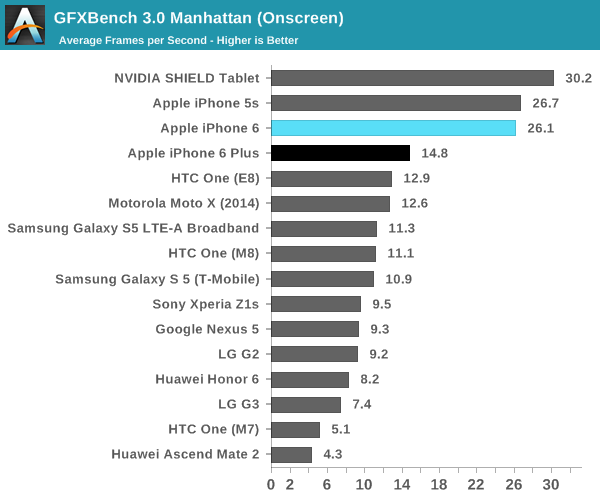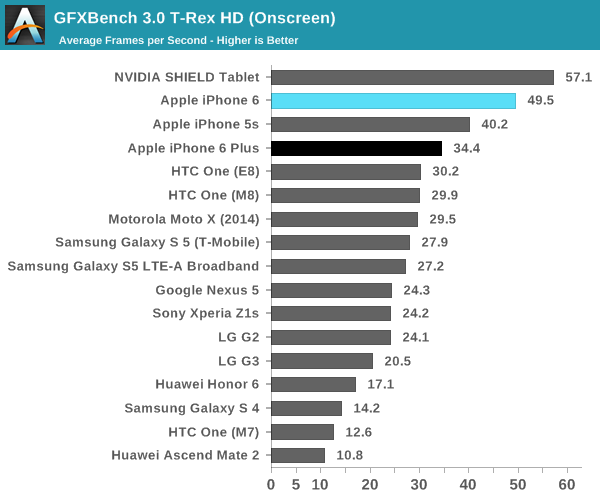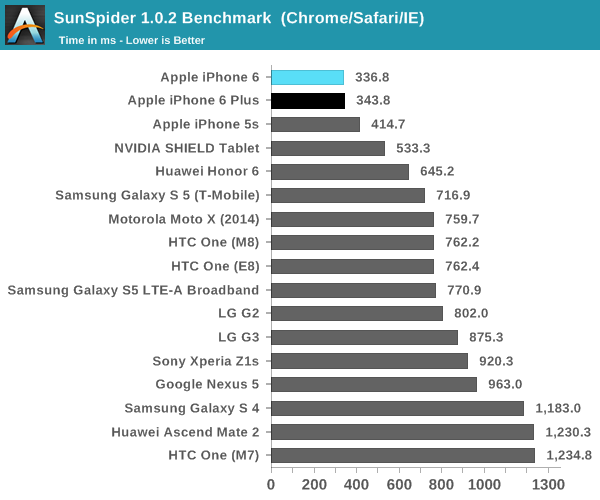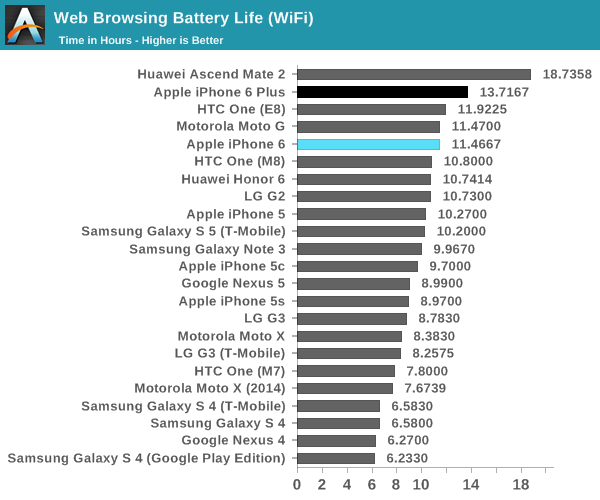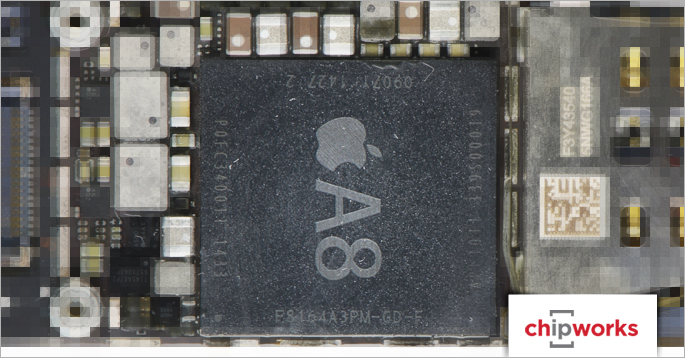The new iPhone 6 and iPhone 6 Plus powered by the Apple-designed A8 processor leave the vast majority of Android competition in the dust in terms of CPU performance and battery life, according to a series of performance benchmarks conducted by the reputable hardware review website AnandTech.
The website’s founder Anand Lal Shimpi recently joined Apple for an undisclosed role.
Speaking of the handsets’ graphics performance, the site has found the iPhone 6 Plus performing a hair slower versus the iPhone 5s due to the increased screen resolution. It’s also approximately fifteen percent slower in GPU performance than the Nvidia Shield-based tablets. Despite this minor setback, performance gains across the board translate into “a pretty solid lead over the competition for the iPhone 6/A8,” wrote the site.
According to Apple, the A8 processor has two billion transistors, twice as much as the previous A7 chip. The piece of silicon incorporates twenty percent faster CPU and a cool fifty percent faster graphics while enabling up to 50 percent more energy efficiency than its A7 counterpart, as per Apple’s official numbers.
For those wondering, the impact to the iPhone 6 Plus’s graphics performance is due to the fact that the handset actually renders everything in the 2,208-by-1,242 resolution before automatically downsampling images (I know, it sounds crazy) to fit its five-inch 1,920-by-1,080 pixel resolution display.
AnandTech speculates that this technique, which inevitably introduces overhead, is necessary because the rendering system for iOS “cannot easily adapt to arbitrary resolutions and display sizes”.
The new iPhones recorded a thirteen percent faster performance in the SunSpider benchmark test for the A8 chip’s CPU portion. The site underscored that better CPU performance cannot be explained by frequency increases alone (the iPhone 6’s A8 is clocked at 1.4GHz versus 1.3GHz for the A7 inside the iPhone 5s).
Have a look at the SunSpider benchmark test below (note: lower is better).
Keep in mind that these benchmarks are just that, benchmarks.
In real life, the responsiveness and the perceived speed of any mobile device is dependent on a number of factors, including the responsiveness of the touchscreen, the speed at which apps load into memory, the visual effects and even such mundane things as the design of various user interface elements.
And this is where Apple’s oft-praised vertical integration comes into play.
Because the Cupertino firm designs its own chips, operating system, services, apps and hardware components like the M8 motion coprocessor and the display assembly, it is able to integrate the components for maximum power efficiency and make the hardware and software work in concert for maximum efficiency.
AnanadTech thinks the benefits of Apple’s vertical integration are really evident when taking into account the iPhone 6’s 1810mAh battery with 3.82V nominal voltage.
“Apple has managed to do something quite incredible with battery life”, explains the article.
The1810mAh battery inside the iPhone 6 would otherwise have filed as “quite a poor performer” had it not been for the fact that the iPhone 6 is “a step above just about every other Android smartphone on the market” in terms of energy efficiency.
The 2910mAH battery found inside the iPhone 6 Plus has earned the handset second place, behind the Huawei Ascend Mate 2.
Putting the A8 chip under a microscope, reputable semiconductor experts over at Chipworks have been able to determine that the A8 chip owes its power efficiency in part to a 20-nanometer process technology by Taiwan Semiconductor Manufacturing Company (TSMC), as opposed to the 28-nanometer A7 chip which is thirteen percent larger than the A8.
In addition to being manufactured by TSMC rather than Samsung, Chipworks’ analysis has discovered that the Apple-designed processor still packs in one gigabyte of RAM.
AnandTech will be posting its full hardware review of the new iPhones in the near future. Chipworks’ detailed analysis of the A8 processor is coming later this week.
If you can’t get enough of benchmarks, Tom’s Guide has interesting benchmark scores comparing the new iPhones to the previous-gen iPhone 5s and Samsung’s Galaxy S5.
While power users typically care about speeds and feeds, normals couldn’t care less about the numbers: during its opening weekend, Apple sold ten million iPhone 6 and iPhone 6 Plus smartphones, including the four million pre-orders fans placed in the first 24 hours.

